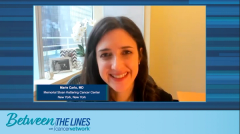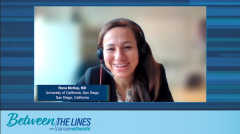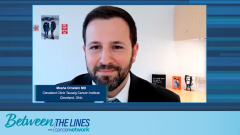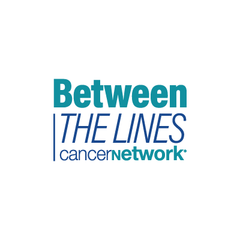
Impressions of Data and Results from the CLEAR Trial
Oncologists give their initial impressions about the results of a clinical trial studying doublet combination therapies for advanced renal cell carcinoma.
Episodes in this series

Robert J. Motzer, MD: What’s been your take on the results of the CLEAR trial in terms of the salient points and the takeaway from the results of that trial?
Mehmet Asim Bilen, MD: This is another great a piece of data in the RCC [renal cell carcinoma] landscape. Most recently we have had back-to-back 4 important combinations come to our toolbox, and overall these data also look great. To me, the response rate is very encouraging, 71%, the CR [complete response] rate of 16.1% is also impressive. The study met the primary end points of OS [overall survival], PFS [progression-free survival], and all the secondary end points, including objective response rate. We still want to see the longer-term outcome, just like with other IO/TKI [immunotherapy/tyrosine kinase inhibitor combinations], but overall, this is one of the effective regimens that we can use for our patients.
Marie Carlo, MD: The results were encouraging on the response rate and duration of response as you mentioned with the combination of a TKI and immunotherapy. To me, it’s helpful when I discuss with patients starting therapy, looking over at the numbers and being a lot more encouraging than we used to be a few years ago when the response rates with single-agent TKIs were less than 50%. Now I can say most patients seem to have shrinkage in their tumor, and with the progression-free survival of nearly 2 years, I can say that on the trial on average people were almost 2 years on this treatment, which is a lot more encouraging conversation than I used to have with patients. It’s also helpful in clarifying the question that was brought up from the phase 2 trials of the efficacy of lenvatinib and everolimus, which is also a regimen I use in the second line, but based on the lack of overall survival benefit in this case, it has not replaced other regimens in the first line.
Robert J. Motzer, MD: The complete response proportion of 16%, how does that compare with your experience with other programs?
Marie Carlo, MD: That’s a great point. There’s always the debate of double immunotherapy, nivolumab and ipilimumab, versus the PD-1 inhibitors and a TKI. That complete response rate in the original ipilimumab plus nivolumab trials was very high, and people were nervous whether the complete response rate was going to be quite as high with the TKI/IO combinations. But this trial certainly with 16% complete response rate is numerically quite impressive comparable to double immune therapy, which encourages a lot of people who are still thinking that only the double immunotherapies would lead to such high CRs. In comparison, one thing that I thought was, would you be more likely to have a complete response if you’ve had a cytoreductive nephrectomy because it’s hard to get a complete response with the primary renal tumor still in situ. But this trial had a comparable rate of nephrectomy in eligible patients compared to the other recent first-line trials. So we can’t quite say that’s the reason why there is such a high CR rate. The data speak for themselves.
Robert J. Motzer, MD: I agree. The distinguishing factors of that trial were the robust efficacy we saw with lenvatinib plus pembrolizumab. It was the longest median progression-free survival we’ve seen in any of the phase 3 trials with RCC, and an objective response rate that for the first time crossed 70%. One of the standouts for ipi-nivo [ipilimumab plus nivolumab] has been the complete response proportion. To date, the TKI/IOs haven’t been able to duplicate that, although cross-study comparisons limit this. I was impressed by the complete response proportion of 16% with this regimen.
The other somewhat unexpected finding was the overall survival data with lenvatinib plus everolimus. There wasn’t a survival benefit for lenvatinib plus everolimus, in fact survival was trending in the wrong direction. To me, that probably reflects a couple of factors. One, it may be because of the toxicity of the regimen that there are patients who develop toxic adverse events with lenvatinib plus everolimus and are not able to switch to subsequent therapy with immunotherapy as we see in the sunitinib arm. Or it may be that because it was an investigational regimen and it was not blinded, investigators had a longer tendency to keep people on that lenvatinib plus everolimus, and again, not switch over to IO therapy as a salvage.
The lenvatinib plus [pembrolizumab] is the real winner in the trial. It also suggests to me that you need the IO component to drive a survival benefit here. That’s what we’ve seen with some of the other combinations, [axitinib, pembrolizumab] and [cabozantinib, nivolumab], as well as the [ipilimumab, nivolumab], that with the IO in combination in first-line therapy, there is a survival benefit. From my standpoint, all patients should be offered an IO combination in first-line therapy.
Transcript edited for clarity.
Newsletter
Stay up to date on recent advances in the multidisciplinary approach to cancer.




























































































